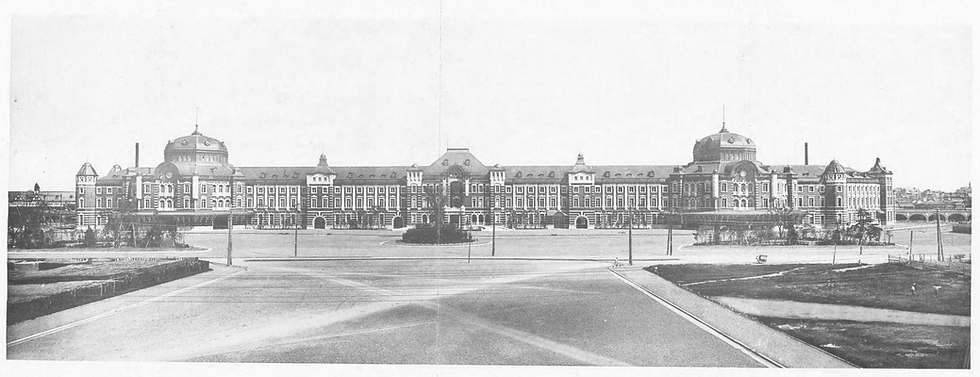Meiji Jingu: Tokyo's Sacred Forest Sanctuary Honoring Emperor Meiji
- M.R. Lucas
- Nov 27, 2024
- 3 min read
Updated: 7 days ago

Nestled within a vast forest in the heart of the city is Meiji Jingu (明治神宮, Meiji Jingū), one of Japan's most renowned Shinto shrines. Here, the spirits of Emperor Meiji (明治天皇, Meiji Tennō), Japan's 122nd emperor who ascended the throne in 1867, and his Empress Shōken (昭憲皇后, Shōken Kōgō) are enshrined. Empress Shōken was a supporter of national welfare, women's education, and the International Committee of the Red Cross through the Shōken Fund. Though their tombs are located in Kyoto, the shrine, built in 1920, honors the Emperor and Empress and their vital roles in the Meiji Restoration—a series of modernization reforms that laid the foundation for modern Japan.
When you step away from the electrifying noise of the capital and walk along the tree-lined paths leading to the shrine, the city's hustle and bustle fade into a peaceful green sanctuary. Every tree was carefully chosen for its future appearance 100 to 200 years from now, guided by Dr. Honda Seiroku (本多 静六, Honda Seiroku), known as the "father of Japanese parks," who also designed Hibiya Park. The forest was initially landscaped and maintained by volunteers, including members of the youth organization Seinendan (青年団, Seinendan), with over 100,000 trees donated from across Japan. The artificial, self-sustaining forest was completed on November 1, 1920. The shrine is open daily, with hours that vary by season.

When visiting, be sure to explore the many sake barrels and Western wine barrels dedicated to the deities of Emperor Meiji and Empress Shōken. The northern part of the shrine complex is well known for its ability to ward off evil spirits. Near the sake barrels, you'll find a café and an apparel shop. The shrine grounds include both inner and outer gardens, such as the peaceful Meiji Inner Garden (明治神宮御苑, Meiji Jingū Gyoen), which was once owned by Kato Kiyomasa (加藤 清正, Katō Kiyomasa) (1562–1611), a Japanese daimyo, and later by the Ii Clan (井伊氏, Ii-shi) from Tōtōmi Province (遠江国, Tōtōmi no Kuni). During the Meiji era, the garden was often visited by the Emperor and Empress, who were enshrined under the supervision of the Imperial Household Agency.
The garden, open to the public all year, features a tea house, a gazebo, and an iris garden. Be sure to visit Kiyomasa Well (清正井, Kiyomasa no Ido), a well-known "power spot" believed by locals to offer positive energies and healing properties. It is said to have been dug by the warlord Kato Kiyomasa during the 16th century, and it is considered lucky to keep a photo of it on your smartphone. The well is tucked away in a quieter part of the garden, often overlooked by visitors heading to the main area.

Near the main shrine, prayers are offered to ward off evil spirits. The annual Shichi-Go-San (七五三, Shichi-Go-San) festival celebrates the growth of children aged 7, 5, and 3, with families visiting the shrine to express gratitude through prayer. The nearby International Shinto Cultural Research Institute promotes the worldwide growth of Shintoism, Japan’s indigenous religion centered on kami (神, spirits or deities).
Most of the complex was destroyed in 1945 due to Allied bombings during World War II. However, the forest survived, and the shrine was restored to its original grandeur by 1958. Today, it houses the “Divine Virtues” of the enshrined Emperor and Empress, showcasing their texts, poems, and achievements. Visitors can view artifacts such as the Charter Oath in Five Articles, which established guidelines for a new Japan, and the Imperial Rescript on Education, which laid the foundation for a national education system.

Although their tombs are in Kyoto, Meiji Jingu was established as a lively place where kami are honored, commemorating Emperor Meiji and Empress Shōken. Visiting Meiji Jingu provides an escape from Tokyo's busy, often gray cityscape into a space where traditional rites of passage and wedding processions are regularly seen. Millions visit the shrine each year, many making it their first shrine visit of the New Year. While nearby train stations offer easy access to Meiji Jingu, MK provides a grand entrance to this sacred site, offering a luxurious arrival experience.
Check out more info on the MK Guide!
Let MK be your guide to Tokyo. Please take advantage of our experience and hospitality to ensure your stay is smooth and unforgettable. Try our lineup of luxury vehicles and create a customized sightseeing trip around Tokyo with an English-speaking driver.





Comments